5 The most important aspects for students with higher learning potential

Figure 5.1
If you look around you, you cover 360 degrees. I think that means that there are at least 360 ways of looking at a task or topic. The teachers must exploit this to give us challenges.
Input from SkoleProffene
This chapter presents some educational initiatives that the knowledge base shows may be important for students with higher learning potential: identification and acknowledgement of students' learning potential and educational and organisational differentiation, see Figure 5.2. The Committee points out that the initiatives here are also highly important for the rest of the student group.1 The measures must be considered in connection with each other, and the aim is that students should feel more included in subjects, on the social, cultural and organisational levels2 in the learning environment they are participating in. The Committee believes that the implementation of all the measures presented here is viable within the regular instruction.
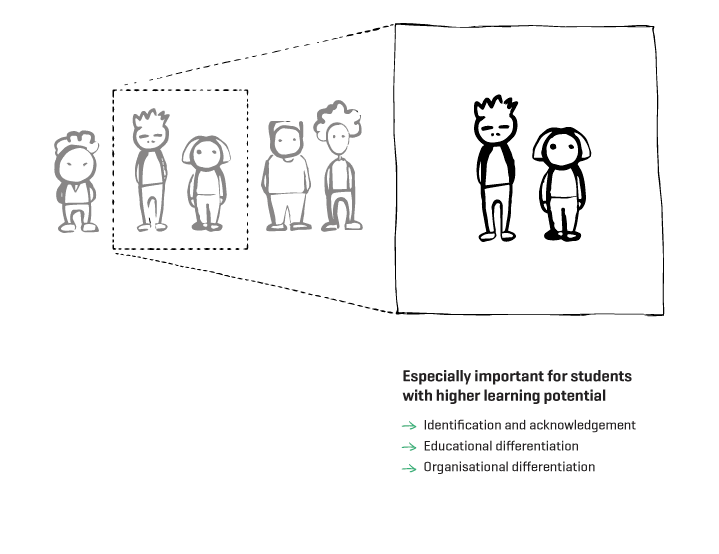
Figure 5.2 The most important aspects for students with higher learning potential
School's organisational framework, teaching practice and educational tools are interdependent factors in the development and implementation of teaching measures for the students.3 It is also important that such social factors as group dynamics in the class and the learning culture are considered when planning instruction for this group. Organisational and structural choices will affect how school can implement pedagogical measures.4 Organisational measures, such as skipping years in school, are described in Chapter 6.
5.1 Identification and acknowledgment
As students and school pros, we want teachers who are curious about us, and want us to do well. It is not always easy to discover that we are gifted, and then it would have helped if the teacher had known something about being gifted.
Input from SkoleProffene
Before the national authorities, school owners, school leaders and teachers plan and initiate measures for students with higher learning potential, the students must be identified and acknowledged as such. Without this basic competence, random measures will have little effect. Identification requires research-based knowledge about the students' needs, and about what characterises their challenges and strengths.5
In the European countries it is common to use mapping tests to assess school performance and students' abilities, in addition to grades and other forms of school achievement. In addition to this, psychological tests (intelligence tests) and educational-psychological tests (linked to school performance) are used. In some countries (for example Sweden, France, Poland and England), a nomination system is also used – by teachers, parents and peers, or self-nomination. Interviews are also conducted, with parents and the student, often with an expert present. In Germany, students are identified through competitions in and outside of school. Identifying students with higher learning potential is a complex process, and often various methods are combined to achieve this. Various difficulties a student may have can make the identification process extra challenging, and often the students are not identified at all.6
As the situation is in Norway today, students are tested to exclude or find signs of difficulties or challenges, such as ADHD, ADD or autism. One researcher, Ella Idsøe, has stated in an interview in connection with the Bærum Schools project (municipality close to Oslo) and their efforts for gifted students, that Norway, in much the same way as the other Scandinavian countries, looks for students' problems, forgetting to see that they also have abilities and resources. In Norway, there is little acceptance or tradition for mapping abilities or potential, and for this reason there are fewer and poorer tools than in other countries that have developed special identification tools.7 Identification covers more territory than only using mapping tests. Students with higher learning potential constitute a diverse group with a multitude of strengths and challenges. It is therefore necessary to have a perspective on the identification process which includes the emotional, academic, social, physical and mental needs of the students. Here are some examples of relevant sources that may be applied, and which should be considered in context:
Results indicating something about the student's knowledge level, skills, performance and progression.
Observations which indicate signs of behaviour suggesting higher learning potential or underachievement.
Information from the student personally, parents, peers, educators and others who are familiar with the child.8
In such areas as development of language and motor skills, and an early start on reading, it is particularly important to involve parents in the identification process. Furthermore, dialogue with the student and information from co-students, educators and others who are familiar with the child are useful for obtaining knowledge about the student's potential.9
Input the Committee has received shows that many teachers find it difficult to know which students have higher learning potential. They need tools which can help them identify the students, and knowledge about what these students need when it comes to follow-up and teaching measures. Teachers need mapping and guidance material for identification, in addition to didactic techniques in the subjects they teach. Guidebooks prepared as resources for teachers must be practical and function as specific work tools. They must also be connected to activities that support learning. Teachers also need a repertoire of teaching strategies when identifying the potential of the children they are teaching.10
Education Scotland has developed resources which help schools and teachers adapt instruction to the personal abilities and aptitudes of the students in the work with differentiated instruction. The authorities have not implemented any special measures for students with higher learning potential, but have rather opted for personalised learning for all students. The purpose of the guidance material is that familiarity with the students through dialogue and mapping of progression and development should permeate planning of teaching, assessment methods and learning activities, see Figure 5.3. This does not mean that many different teaching schemes need to be prepared, but that the teaching must consider each student's potential. The individual learning of each student impacts how schools work with all these items. Education Scotland highlights some key processes that may strengthen the ability of teachers to adapt the instruction of the students so they perceive the learning in school as personal and relevant:
Dialogue
Subject curricula planning
Learning activities
Assessment
Tracking and monitoring progression and adjusting the teaching
All these processes must be integrated and considered together in a culture where there are high expectations for all students. The students' learning must dominate school's work with the issues above and provide the basis for more flexible work with differentiated instruction which considers the individual differences of the students.11 Students with exceptional learning potential have special needs for a differentiated instruction that provides personalised learning.12
5.1.1 Early identification
The report to the Storing on lifelong learning establishes that the education system should step in as early as possible to help, stimulate, guide and motivate each child to do his or her utmost to realise his/her learning potential. Moreover, early identification and then early differentiation of the instruction may ensure a more stable social environment over time in the classroom.13
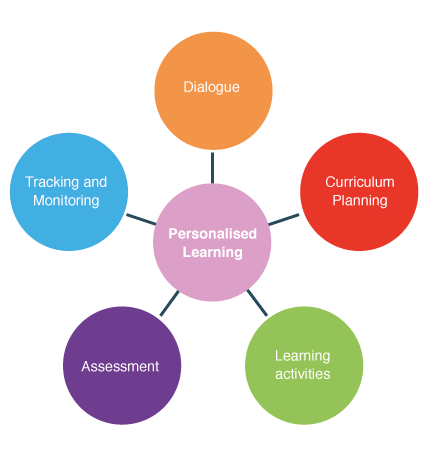
Figure 5.3 Personalised learning
Source Education Scotland 2015 a
Early identification is decisive for developing the potential inherent in the child. If this is not uncovered, the child is at risk of not being seen and then being under-stimulated. For some children, school may be a disappointment because they may already be able to read.14 Children do not start school with a clean slate, and it requires good communication between day care and school to give the children the best possible start in school where their needs and abilities are addressed. Early identification and early differentiation of the instruction may ensure a more stable social environment over time.15 This requires knowledge about the children's experiences, current positions and abilities, already from day-care age, and this will not be available without good dialogue across the institutions.16 Making good systems for the transition from one institution to the next are important for all students, and particularly for students with higher learning potential. In this context, relationships play an important role. Students with higher learning potential who are not given the differentiated instruction they need, may end up dropping out of school.17 A research summary on non-completion, carried out by the Knowledge Centre for Education, shows that measures to strengthen relations may be of great importance for preventing non-completion. It may be difficult to establish good and trusting relations when the problems have become too large. Therefore, educational institutions must work continuously on building relations throughout the entire school system, from day care to upper secondary education.18 The Committee draws attention to the fact that day care does not come under the mandate for the report, but we still find it important to point out that it is important that children with higher learning potential can interact with adults in day care who can create an acknowledging and stimulating environment.
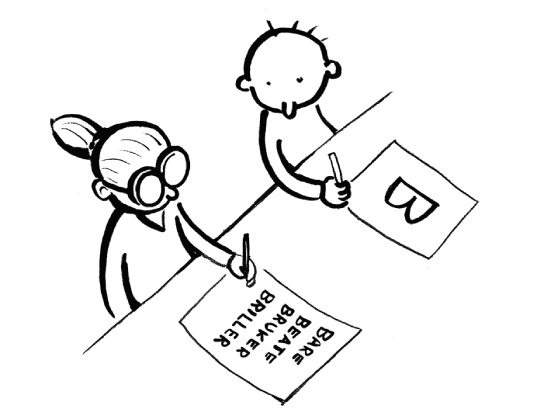
Figure 5.4
5.2 Differentiation
Teachers must never make us standout or give us too much attention, neither positive nor negative. Teachers must talk about having different skill levels in the class as something normal and natural. They should not present it as if some are smarter and some are dumber, they should rather speak about how we learn in different ways and at different speeds.
Input from SkoleProffene
Leading and differentiating learning activities means facilitating for mastering by all the students, including those with higher learning potential. This requires that teachers have knowledge about learning and use different teaching strategies in their work with the students. Differentiation is a feature of a teaching practice where the subject curricula, teaching methods, learning activities and student work are adapted by the teacher to satisfy the needs of the students.19 Many students with higher learning potential are not included in groups receiving differentiated instruction, often because the teachers are more concerned with those who are struggling with the subjects.20 The research summary concludes that the best strategy for students with higher learning potential is probably differentiation, but that the differentiation practices of the teachers is insufficient.21 National evaluations of the Knowledge Promotion curriculum suggest that it is challenging to provide differentiated teaching for all (the social dimension), while also strengthening each student's learning outcome (the academic dimension).22
Educational and organisational differentiation are important educational measures for students with higher learning potential. Educational differentiation refers to differentiating the instruction to satisfy the learning needs and abilities of the students. This may for example be accomplished by means of enrichment of the subject curricula and use of ICT as an educational tool. Organisational differentiation takes the school's structural conditions as its point of departure and includes scheduling of teaching hours, grouping of students, social interaction and the use of teacher resources.23
5.2.1 Educational differentiation
Educational differentiation means that the teacher adapts the content, work process or product to the potential, motivation and knowledge level of the students and to their different ways of learning.24 Such adaptation shall contribute to supporting the students' motivation and development in the subjects. For students with higher learning potential this is particularly important as they often need more complex and challenging tasks and activities than many of their peer age group.25 By giving the students special tasks, such as oral presentations or independent work with tasks in their areas of interest, the students will have better opportunities to develop their self-regulating abilities, which in turn may be important in preventing under-achievement.26 Independent work still requires guidance and support from the teacher.
Examples of differentiation may be:
Content (determine the student's development level, compress the subject matter, adjust the complexity, and allow time to reflect and construe meaning)
Process (formative assessment, guidance, learning strategies, different methods of providing information, open tasks to encourage problem-solving methods, flexibility in organising groups and complexity of tasks, self-regulated learning, co-participation)
Product (use different media and methods for presenting products, show complex and deep mastery of a topic, self-assessment of effort as part of a metacognitive process)
Learning environment (create a safe, risk-free learning environment, dialogue and discussion between students, balance the dialogue between teacher and student, listen with respect, remain open to new ideas and teaching aids, model acceptance of each student's unique and different abilities and aptitudes)27
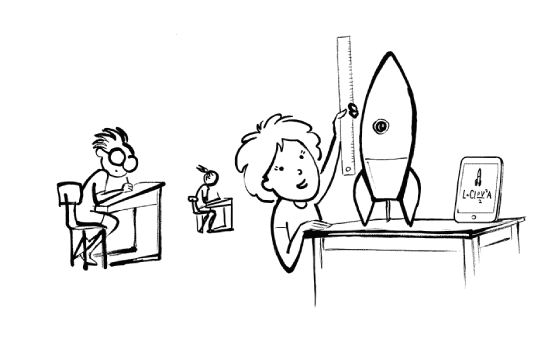
Figure 5.5
Textbox 5.1 Example of enrichment activities
The research summary refers to a review of studies of enrichment activities in the Schoolwide Enrichment Model, developed by Renzulli. These studies highlight two different activities (type 2 and type 3) that deal with the development of investigative skills. The purpose of type 2 activities is to promote skills such as thinking, research, communication and method competence, while type 3 activities focus more on individual student activity and the investigative role. Here it is expected that the student shall think, feel and act as professionally as possible.
The most important findings from the studies are:
Students participating in type 2 activities had a higher probability of initiating investigative projects
Students who were allowed to work with elements from both type 2 and type 3 activities produced more complete products with higher quality
Students who participated in type 3 activities showed positive development of personal skills and in deciding career and education choices
In the development of investigative skills, a high level of independence is required, while cooperation is necessary for producing products of high quality.
Source Børte et al. 2016
Enrichment of subject curricula
Enriching subject curricula is one way of working with educational differentiation which focuses on elaborating and broadening the subject matter. Opportunities for elaborating and broadening the subject matter in some or many subjects will benefit students with higher learning potential.28 By enriching the subject curricula the teacher will take on a role which will help the students to acquire competence in learning and independently acquire new knowledge, rather than through traditional teaching where the teacher transfers knowledge to the students.29 Enrichment may be accomplished in several ways. Some practical general recommendations for teachers who teach students with higher learning potential are mentioned in the textbooks.30 These refer to subject matter and competence objectives which must be more abstract, complex, varied and organised according to concepts. Furthermore, the use of problem-solving strategies is recommended, as well as using open tasks and the application of metacognition (which stimulates higher cognitive processes). Using technology for educational purposes and giving students options and variation between individual learning and cooperative learning are also suggested as important steps.31
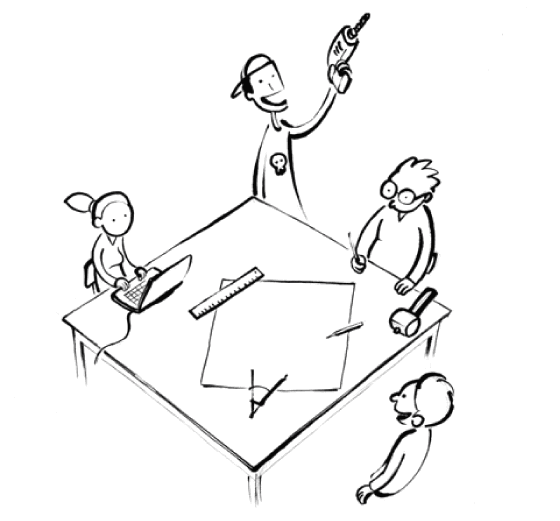
Figure 5.6
In recent years, the FIVIS study has shown results which may indicate that schools find it challenging to work with the subject curricula in their entirety with respect to an in-depth and broad approach. Teachers are struggling to set up learning objectives that are approachable and that give direction to the weekly and monthly learning activities of the students. There are also examples showing the learning may become fragmented when the learning objectives are broken down into learning goals that are detached from the subject's big picture. The FIVIS study, for example, shows that schools which work well instantiating the goals as part of assessment for learning also have good subject competence and work well with the subject curricula. This indicates that there is a need to increase the understanding of the connections between the subject-curricula objectives, local curriculum activities, ways of working in the subject, feedback to students and assessment in the subject. The need to work with in-depth learning in school is confirmed in the final report from the SMUL project.32 This project refers to the lack of depth in the verbal interaction in the classroom and the importance of exploration and support for the students' understanding of the subject matter. This may apply to work with relatively simple tasks connected to identifying or producing and then registering units such as words, concepts and factual knowledge. It was especially in the first years of primary school that importance was attached to relatively simple reproduction of knowledge elements.33
Use of ICT as an educational tool
One way of working with differentiation is to use ICT in the instruction. According to the TPACK model (technological, pedagogical and content knowledge), the pedagogical use of ICT may be understood as the teacher's composite competence in three knowledge areas: subject and content, pedagogy and technology, see D in Figure 5.7.34 Using ICT as a pedagogical tool means that digital tools may support the teaching, contribute to better learning for the students and become a natural part of the instruction. This means that only possessing or using one of the knowledge areas – subject, pedagogy or technology – will not contribute to better learning for the students.
Technology alone cannot improve the day-to-day work in school for teachers and students, but with correct use it may have a positive impact on student motivation and learning. Schools that have introduced technology in their learning processes see that more students with different abilities retain their motivation for learning, and that the students can learn at their own pace.35
The ARK & APP 2016 survey shows that teaching a plenum session with the whole class consumes around half of a teaching session.36 The teacher's monologue when teaching the full class may have a very demotivating effect on students whose knowledge may at times surpass that of the teacher. For all students, but particularly for those with higher learning potential, this may become dull when there is little stimulation. The use of digital teaching material is increasing in Norway, and most teachers in year 9 in lower secondary school and year 1 in upper secondary school (Norwegian abbreviation Vg1) use digital teaching resources in the subjects of natural science, Norwegian and social science.37 This may allow students with higher learning potential to work more interdisciplinary and in-depth at their own tempo.
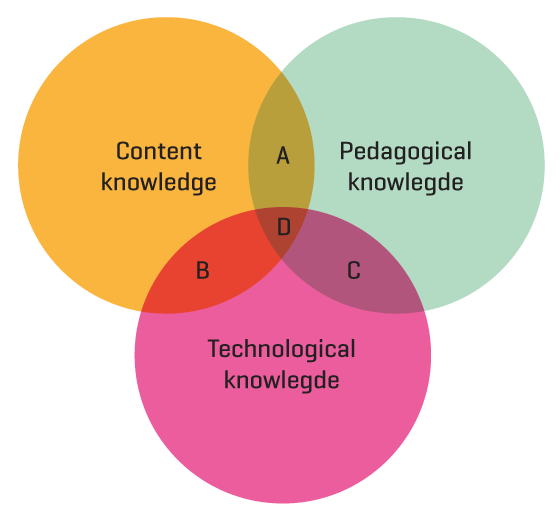
Figure 5.7 TPACK (Technological, pedagogical and content knowledge)
Source Mishra and Koehler 2006
ICILS 2013 shows that there is a strong call for competence-raising of teachers, and that measures to raise teachers' profession digital competence in subjects have not been properly systematised in the Norwegian school. Norway still has some way to go to be able to differentiate the instruction and facilitate for use of ICT as an education tool. A country it is interesting to compare Norway to in this context is Denmark. Danish students achieve on a par with the Norwegian students in the study, and Denmark has the same circumstances in terms of resources and attitudes. But the Danish school has integrated ICT in the teaching much more than Norway. The main reason for this is probably the central focus on developing good digital teaching aids.38
The use of ICT as an educational tool, for example by “flip teaching”, or reversing the traditional classroom teaching39, or a virtual school, requires a paradigm shift on the part of students and teachers. It also requires the availability of dedicated teachers who can provide good instruction in online learning because it is the selection of web pedagogical techniques and how the teacher uses digital tools in the teaching that impact the learning outcome of the students.40
An example of the use of ICT as an education tool is DVM [the Virtual Mathematics School]. DVM provides in-depth learning and studying in upper secondary school level mathematics for students in lower secondary school, see Chapter 6 about skipping years. This is a free web-based supplement to the regular instruction in lower secondary school to give the students motivating and improved differentiated instruction. When the Committee visited schools, geographic discrimination, access to contact with an upper secondary school and large variation in the follow-up the students receive from their own lower secondary school were frequently raised topics. This is due to the varying extent to which schools have understood the implementation of DVM, and not least to the rules for skipping years.41 The Committee also finds themes and tasks which involve mathematical creativity to be important, and students with higher learning potential appreciate them.
Organisations, school owners, school leaders, teachers and students have provided the Committee with input that states that it must be possible to move ahead (skip years, subjects) and study in-depth in the same way in other subjects than just mathematics. DVM shows how a school that is making use of ICT as an education tool influences the students' learning outcome and sense of mastering in a positive way.
5.2.2 Organisational differentiation
We are all different, and there is no one solution that suits everyone. Some want to be taken out of the class to work with challenges on their own, in groups or with older students, while others want to stay in the classroom with their co-students and rather be given challenges there.
Input from SkoleProffene
Organisational differentiation refers to how the students are grouped so that their subject needs and levels can be addressed properly. Students may be divided into different classes or groups based on their interest in a subject or subjects, or what they have aptitudes for (subject differentiation).42 Moving ahead or skipping a year is also a form of organisational differentiation.
The social interaction and the social composition of students in a group is the decisive factor for students with higher learning potential to perform well. This may be more important than composing groups according to the level.43 The research summary therefore points out the importance of group differentiation as a measure supporting learning. Social interaction may influence how the students work best, and it is important to consider the students' need for cooperation, both with like-minded students and others. It is of great importance how school leaders and teachers group students. The teacher must be familiar with characteristics of the group of students and have an understanding of group processes and group dynamics if the chosen groupings are to strengthen the students' motivation for learning. The teacher must also know the needs of each student. What constitutes good cooperative relationships in the class or school keeps changing, and must therefore be an important element of teachers' professional knowledge.44
Section 8-2 first paragraph of the Norwegian Education Act describes the provisions for organising students in classes or base groups.
Textbox 5.2 Section 8-2 first paragraph of the Norwegian Education Act. On organisation of students
The students may be divided into groups as necessary. The groups must not be larger than is justifiable in relation to pedagogy and security. The organisation shall safeguard the students' need for social belonging. Students shall not normally be organised according to their level of ability, gender or ethnic affiliation.
The basic point of this provision is that the instruction must be inclusive. Veiledningen om organisering av elevene. Opplæringsloven § 8-2 m.m [Guide to organising students. Section 8-2 of the Education Act etc.] from the Ministry of Education and Research, refers to how school must actively consider the different abilities and needs of all students when organising content and teaching.
The school's learning environment depends on the social interaction between the students, and in a good learning environment the students contribute and support each other's work and learning. Contributing to all students achieving their learning potential and providing good differentiated instruction in a diverse group of students may be challenging work.45
When it comes to the term normally in the wording of the Act, this is the legal point of departure and the general rule: students shall be in classes or base groups for so much of the time in school that their need for social belonging and stability is satisfied. This may be deviated from in specific cases when there is sufficient reason in the best interests of the student, and when the school has a clear and well-considered relation to how the instruction is organised.46 If the students are to be organised according to their level in subjects, the assessment of this need must be made on a regular basis so that the organisation will be as flexible and limited in time as possible. The term normally then opens for organisational differentiation for periods of time if this is appropriate for the students' needs and learning outcome.
While working on the report the Committee has experienced that there are different interpretations as to how this provision should be practised. This is consistent with findings from a national review in 2009, where the issue was whether the local authorities and private schools had an acceptable system for ensuring that the organisation of students in groups is in accordance with the Education Act and the Act relating to Private Schools. The actual organisation of students in groups was not examined. The results showed deviations of 67 per cent for the local authorities and 29 per cent for the private schools. The Norwegian Directorate for Education and Training in this connection pointed to the need to assess the rules.47
Textbox 5.3 Gaupen primary school in Ringsaker municipality
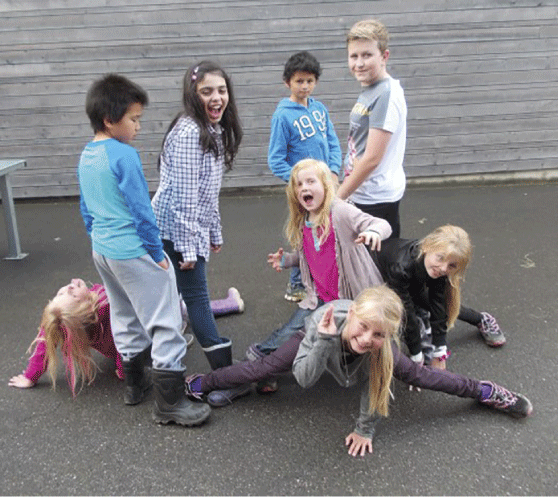
Figure 5.8
Gaupen school has more than 100 students and has worked across years and subjects for more than ten years.
The school has an action plan for “Children with higher learning potential and gifted children” which was prepared in the spring of 2014. It is revised regularly and its purpose is to help and support teachers in how to work with the students, parents and external cooperation partners.
The action plan consists of an action log with measures and distribution of responsibilities, dialogue forms with characteristics, teacher and parent forms for each subject and the student's self-reporting form.
The action plan aims to ensure that the students who are performing better than expected in a subject are given additional challenges. These students may be those who have a great talent in a subject, students with higher learning potential and skills above the competence objectives for the school year in question or are gifted children. Differentiated instruction requires flexibility in how the instruction is adapted to each student, and the didactic programme will necessarily have different outcomes.
What is required so that we will manage this is that the school has good attitudes to the principle of differentiated instruction and can satisfy the students on their personal subject level. The teacher must be solution-oriented and seek cooperation with colleagues to find the best solutions for the student. As a school, we cooperate closely with parents and the student on his or her development and improvement potential. To determine whether the goals and work tasks the student is given provide challenges and mastering, we have dialogues with the student where the aim is the students' co-participation in their own development.
The staff at Gaupen school cooperate on an on-going basis for the students by giving each individual good and challenging instruction. The goal is differentiated instruction for all. The students who have particularly high abilities also need good differentiated instruction, says Gerd Elin Borgen, Gaupen's head of school.
A common measure in the school for these students is to let them attend classes in another year than where they ordinarily belong, if this gives the best adaptation for the subject in question.
The competence and observations of the teachers and mapping test results are the basis for the assessment of the students and consequently the subject differentiation. The head of school and the teachers discuss the needs of individual students on an on-going basis. In the annual year-review dialogue with the head of school, they discuss which students need special instruction, Gerd Elin states. In the dialogue meeting, the leader and the teacher discuss how the teacher can work with students on both ends of the scale. There we discuss which students this might concern, and which challenges can be given to the students. We also have a dialogue on how the teacher can focus on measures for the whole group together, and how this can be carried out in practice. We ask ourselves about how we can work so that what we initiate will benefit all the students.
To create the flexibility needed for differentiated instruction, the school has introduced two elements: digital and personal learning plans for all students and a relative homogeneous subject teaching structure.
When all the students have their own digital subject curriculum, it is easy to adapt it in a way so that the students do not stand out, so the feeling they may have of being different is not reinforced. Then the subject teacher, and not necessarily the class teacher, is responsible for filling in the subject curriculum for the student in question.
The structure for the differentiated instruction means that all the teachers in the school endeavour to schedule their subjects in parallel time slots for all the years, if possible.
These organisational measures make it possible for a student to leave his or her classroom to take the subject in another year, without risking missing anything else. When this is not feasible, agreements are made with the parents about the teaching hours the student loses in his or her regular year, and then we draw up a plan for how we think the student should work with this, Gerd Elin tells us.
Source Johansson 2016, input from Gaupen school
Social relations are highlighted as particularly important for students with higher learning potential. They need their teachers to accept and understand them. There are also indications in research that they learn best in groups. However, current research cannot give a clear answer as to what the optimal group composition should be. A knowledge overview48 concludes that there is support for differentiated instruction for students with higher learning potential, and that grouping according to levels in both heterogeneous and homogeneous groups is preferred.49 Finnish research recommends that the students should be given teaching individually or in groups with other high achieving students. The group may be homogeneous or heterogeneous, but the instruction should preferably take place in different learning situations involving students socially in the full class.50
A research summary51 on students with exceptional learning potential52 shows that part-time efforts may have a noticeable positive effect on students' academic self-perception, motivation and emotional development. This may include separate teaching with other students with higher learning potential some hours each day or one day a week. The study finds that students are challenged and strengthened in their subjects and experience more well-being in school. Parents of students with higher learning potential find that their children pay more attention and are less hyper-active. This requires that schools are confident in their didactic choices, and that they manoeuvre through the legal rules in a well-defined way.53 The Committee believes that the social interaction in a group is important for the students to perform well, but the social interaction does not necessarily have to be with their peer age group or in the school they attend. The Committee believes that group activities and opportunities to work with both like-minded and other students is important. There is a need to clarify the options schools have with examples of good practice and updated guidance material.
Boks 5.3 shows how a primary school is working with differentiation across years and subjects.
The Committee has visited several schools that are planning the instruction and work with differentiated instruction based on the needs and abilities of the students. This is accomplished by scheduling teaching in one or more subjects in parallel time slots, so that teachers and students can move freely across rooms and topics in accordance with the teachers' competence and the needs of the students in the subjects.
Several schools have suggested to the Committee that the guidebook on organising students should contain concrete examples showing how this provision can be practised. The challenge for the schools is that the County Governors interpret the provision differently and their conclusions, advice and remarks are based on different interpretations.
The Committee believes that organisational differentiation does not violate the intentions of the Education Act with respect to social belonging or inclusion, as long as the teachers adapt the differentiation in accordance with the students' learning needs. For some periods of time some students might need such differentiation, either based on learning outcome or social needs. This professional assessment must always bear in mind what is in the best interests of the students in the short and long run, and the Committee believes that any level differentiation which is too broad and too static may have negative academic and social consequences on the societal and individual levels.54
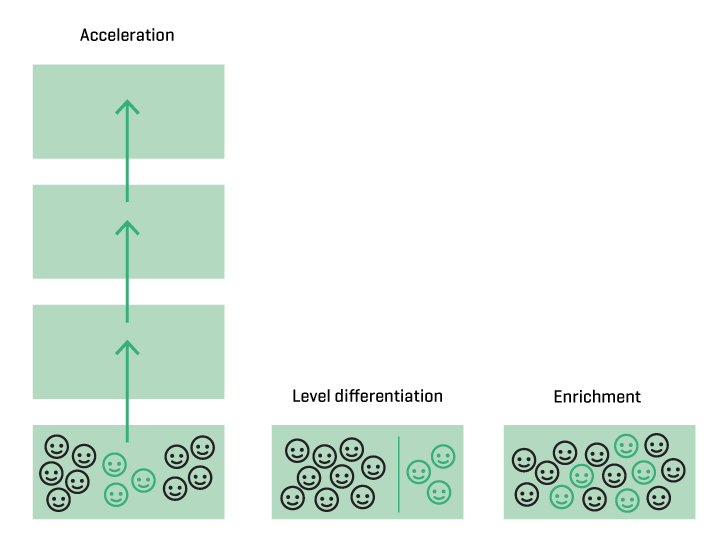
Figure 5.9 Examples of educational and organisational differentiation
5.3 Summary and assessment
If students with higher learning potential are to be given differentiated instruction that will motivate their learning and give them challenges in the subjects, it is important to identify their needs and abilities. This requires research-based knowledge on the needs the students have and what characterises their challenges and strengths. The students must be acknowledged but at the same time should not be made to look different. Knowledge is needed on how to identify the students identified in a beneficial way, and guidance material is needed to show how this can be accomplished in practice. The Committee finds that schools need support for this work and recommends that knowledge-based mapping tests and guidance material should be developed for identification purposes and to serve as the foundation for giving didactic advice with respect to the subjects in question, for the schools, the local authorities and the PPS. The Committee also recommends that the school owners should assume responsibility for ensuring that schools and the PPS have competence in and resources for identifying students with higher learning potential and for providing differentiated instruction for them. The Committee recommends that the national authorities should be responsible for the development and use of an e-learning module for schools and the PPS and for raising competence relating to students with higher learning potential.
The research summary points out some educational measures that are especially focused on differentiated instruction for students with higher learning potential. Examples include the provision of challenging tasks on high levels, metacognition and self-regulation skills. The Committee would also like to suggest enrichment and pedagogic use of ICT as examples of educational differentiation which aims to provide students with higher learning potential with improved differentiated instruction. The Committee recommends that teachers use research-based knowledge and vary their teaching methods through such approaches as in-depth learning and enrichment. For students with a higher learning potential, it is particularly important that work with the competence objectives allows them to go deeper into the material and find challenges suitable for their level and abilities. For some students, various forms of acceleration or progression in individual subjects or topics may be important for their learning and development. If the students are to be given individual guidance and gain insight into their own learning processes, teachers and school leaders need systems to track their progress. The Committee therefore recommends that the national authorities should take steps to ensure that the progression descriptors in the guidelines for the subjects will provide examples of competence on high and advanced levels, and will support the teachers' work in differentiating their instruction for students with higher learning potential. These descriptors must be developed parallel to the renewal of the subject curricula in the Knowledge Promotion curriculum. The Committee recommends that the national authorities should ensure that digital learning resources are developed for students which will feature in-depth learning in all subjects.
The Committee does not recommend a permanent division of students, for example into level-determined groups, as students with higher learning potential will develop at different speeds and have different strengths and challenges. Flexibility is needed in the work with differentiation, whether in the educational or organisational areas. As a point of departure, the Committee believes that the needs of the student in a subject will be the most important factor when grouping students, but grouping should not be static as the level in subjects is dynamic, ever changing and varying according to topic, subject and theme. This means that the subject level may not necessarily determine the grouping, but rather what the students at any time need to work on. A professional assessment is needed, where the one constant is what is best for the students in the long or short run. The Committee believes that a division into levels that is too extensive and static may have negative consequences for the subjects and for social aspects on the societal and individual levels. The Committee emphasises that the social interaction in a group is particularly important if students with higher learning potential are to perform well. Organising students according to social interactions may function as a measure to support learning. Participation in different social contexts based on academic needs and achievement levels means giving students the opportunity to aspire for something on the academic level. It is important to point out that social interaction does not necessarily take place with peer age students or the school the student in question is attending. The Committee therefore believes that group activities and the opportunity to work with both like-minded and other students are important. The Committee therefore recommends that the school leaders use existing research and facilitate for a flexible organisation of students with higher learning potential.
Footnotes
Bailey et al. 2008, Børte et al. 2016
Cf. the inclusion dimensions described in 2.6.4
Børte et al. 2016
Børte et al. 2016
Børte et al. 2016
Børte et al. 2016
Blåsmo, T (11/06 2016): Vil satse på evnerike elever [Will focus on gifted pupils]. Budstikka [a local newspaper near Oslo]
Freeman 1998, Idsøe 2014a, SNAP 2007
Freeman 1998, Idsøe 2014a, SNAP 2007
Idsøe 2014a
Education Scotland 2015a
Gross 2004
Report to the Storting no. 16 (2006–2007)
Skogen and Smedsrud 2016
Børte et al. 2016
Lillejord et al. 2015, Report to the Storting 19 (2015–2016)
Børte et al. 2016
Lillejord et al. 2015
Tomlinson 1999
Børte et al. 2016
Børte et al. 2016
Hodgson et al. 2012
Bailey et al. 2008, Børte et al. 2016
Tomlinson 1999
Idsøe 2014b
Bailey et al. 2012
Idsøe 2014a
Børte et al. 2016, Idsøe 2014a, Skogen and Smedsrud 2016
Renzulli 2005
Tomlinson 1999, Winnebrenner 2003
Børte et al. 2016, Tomlinson 1999, Winnebrenner 2003
SMUL is the Norwegian acronym for “Connection between teaching and learning, ways of working, development of skills and learning in Norwegian, natural science and social science”
Hodgson et al. 2012
Mishra and Koehler 2006
Mishra and Koehler 2006
Gilje et al. 2016
Report to the Storting 28 (2015–2016)
Hatlevik and Throndsen 2015, Ottestad et al. 2014
Often called “flipped classroom”: pupils watch a video lecture or presentation on the web (most often at home) and spend their time in school solving tasks and doing group work
Børte et al. 2016
Ministry of Education and Research 2016a
Report to the Storting 20 (2012–2013)
Børte et al. 2016
Børte et al. 2016
Ministry of Education and Research 2013
Ministry of Education and Research 2013
Norwegian Directorate for Education and Training 2009
Bailey et al. 2012
Børte et al. 2016
Børte et al. 2016
Mehlbye et al. 2015
In this research summary, the group of pupils is limited to 1-2 per cent of the population
Mehlbye et al. 2015
Boaler et al. 2000